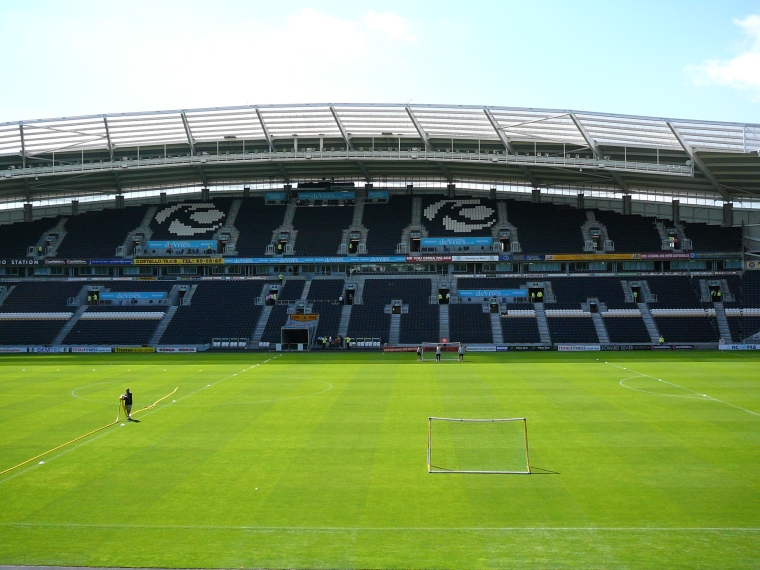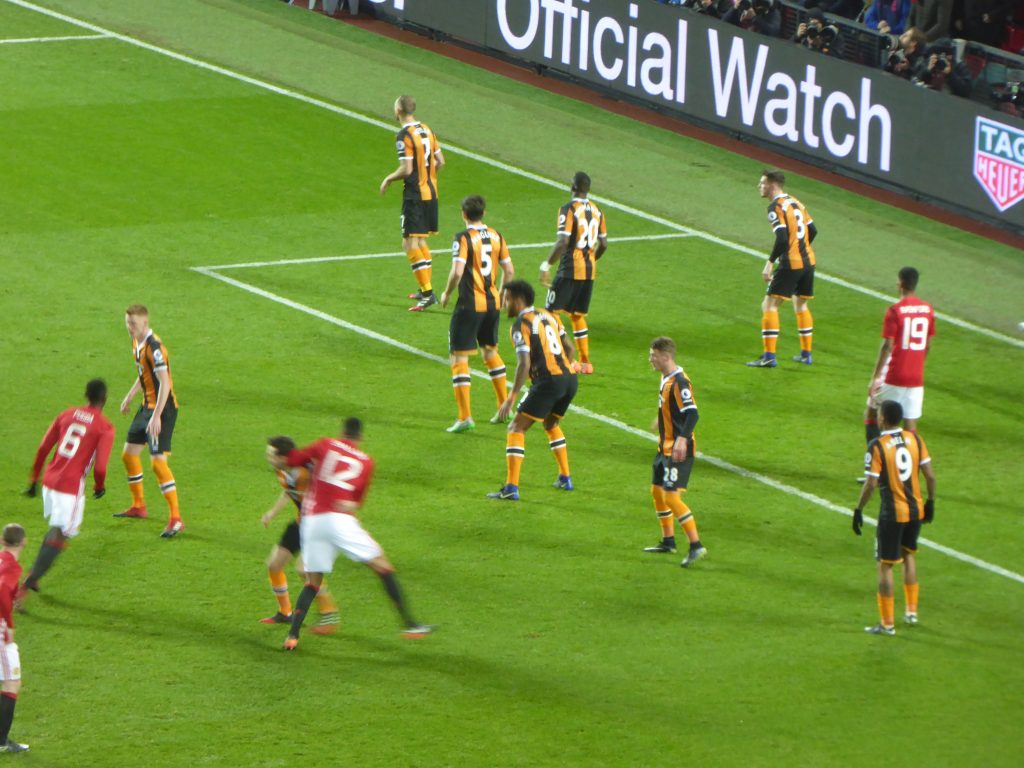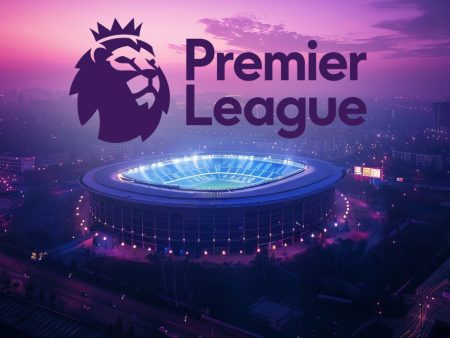
The MKM Stadium is the place where Hull City plays professional English football. The Stadium, which is in Kingston upon Hull, has played a significant role in the community and the local football club ever since it opened in 2002. The MKM stadium has been a center of activity for the neighborhood for more than ten years, holding a range of sporting events, concerts, and other events. However, the stadium offers more than just a location to watch football. In addition, it serves as a link between the team’s past, present, and future. The MKM Stadium’s past, the team’s early years, the stadium’s current condition, and Hull City’s future are all covered in this page. For Fulham, Cottage Stadium is important.
So, let’s explore more about MKM Stadium and its connection to Hull City.
History of the Stadium
The MKM stadium, originally known as the KC Stadium, has a lengthy history that dates back to 2002, when Hull City Football Club held their inaugural match there. The stadium, which was built for £44 million in Kingston upon Hull, was first financed by Adam Pearson, the club’s then-Chairman. The KSS Design Group created the stadium, which has a 25,400 capacity and is the second largest in East Yorkshire. It is Hull City’s home field, and they compete in the English Football League’s Championship tier.
The MKM stadium has witnessed a number of noteworthy events over the years, including Hull City’s first promotion to the Premier League in 2008 and the team’s appearance in the FA Cup Final in 2014. The England women’s team as well as the England under-21s have played in this venue during international competitions. In recent years, a new electronic scoreboard and a new pitch have both been installed in the stadium. Rugby league games are now frequently held in the MKM stadium, which is also the home of Hull FC.
Additionally, the stadium has played host to performances by some of the largest musical acts, including Oasis, The Who, and Ed Sheeran. The MKM stadium has long been a crucial component of Hull City Football Club and has contributed significantly to the team’s accomplishments. It is a lively and exciting location that has played host to some of the largest events in the city and is still a significant component of Hull’s athletic culture. The MKM stadium is certain to continue to play a significant role in Hull City Football Club for many years to come thanks to its cutting-edge amenities and lively atmosphere.
Hull City’s Early Years

Although Hull City’s origins date back to 1904, its early years were marked by relative obscurity. Originally known as Hull F.C., the team joined the Football League in 1905. The team’s first league match ended in a scoreless tie with Leicester Fosse. With only six victories in their inaugural season, Hull City had a challenging start in the league. The team was demoted to the Second Division after finishing the 1907–08 season in 23rd position. In 1913, Hull City was promoted back to the First Division, but they were demoted once more in 1914. Prior to manager Raich Carter taking over in 1933, the team battled in the Second Division for the majority of the following two decades.
Carter turned out to be a valuable member of the squad, helping them earn promotions in 1936 and 1937. Hull City was the first team to relocate from its old home pitch to a new stadium, Anlaby Road, in the 1930s. Later, in 2002, the KCOM Stadium, the team’s current home field, took the place of this new stadium. Up to 25,000 spectators may fit inside the KCOM Stadium, which has grown to be a favourite hangout for Hull City supporters. The team had a strong run in the latter half of the 1940s and the beginning of the 1950s, making it to the FA Cup final in 1949 and taking home the Second Division championship in 1953.
Despite their successes, the squad struggled in the First Division, and in 1958 they were demoted. Hull City had some success in the 1970s, winning the Second Division title in 1972 and the Third Division title in 1974. The team made it to the FA Cup final in 1975, but West Ham United defeated them. Once more demoted in 1979, the squad was reinstated in the First Division in 1983. Hull City has had inconsistent success in the contemporary age. The club advanced to the FA Cup final in 2014 but fell to Arsenal. Despite this, the team has continued to rule the Championship, appearing in multiple playoff rounds since 2009.
The John MKM Stadium
Since 2002, Hull City has called the John MKM Stadium its home. It is tucked away in the centre of the city. It was first constructed as the Boothferry Park stadium, but in 2002, the MKM Group, the team’s new owners, bought it and gave it its current name. The stadium is the biggest football stadium in the area with a capacity of little over 25,000. Some of the most fervent football supporters in England call this stadium home, and on game days, it is electrifying inside. The anthem for the team, “The Tigers Are Here,” is frequently heard being sung around the stadium by Hull City’s devoted and passionate fans.
Modern and state-of-the-art, the stadium itself is furnished with a variety of amenities, such as two restaurants, a club shop, a museum, and a conference centre. Every seat in the stadium has a fantastic view of the pitch because a running track surrounds it. In addition to having a long history, the John MKM Stadium has hosted some of English football’s most memorable events. The 2005 FA Cup final between Arsenal and Manchester United, which the Gunners won 5-4 on penalties, was one of the games played there. In addition, it served as the venue for West Ham United and Blackpool’s 2012 Football League Championship play-off final.
Hull City’s state-of-the-art training facility, which is located at the John MKM Stadium, is also there. The squad’s youth academy uses the training facility, which is accessible to the general public and where supporters can watch the team train. The John MKM Stadium is a source of pride for the team’s supporters and a representation of Hull City’s lengthy history. It is evidence of the team’s capacity to defy the odds and become one of the best in English football. It is a location that will always be associated with Hull City and its supporters.
The Future of The MKM Stadium

In the future, the John MKM Stadium is expected to remain a centre of excitement and activity, continuing to be a point of pride for fans and a representation of the team’s accomplishments. Long-term intentions for Hull City Football Club, who recently relocated to the MKM Stadium, include making the venue a great fan destination. The stadium’s capacity will be increased to 40,000 seats, and new features including bars, restaurants, and shopping areas will be added by the team’s owners. By doing this, the stadium will be well-equipped to fulfil the shifting demands of its fans.
The team has also announced a collaboration with a nearby company that will bring a variety of services and events to the stadium, including a sports and recreation area. This will allow fans to participate in a variety of activities, including football games, gym sessions, and other leisure pursuits. In order to aid young people in the development of their skills and knowledge, the collaboration will also offer a variety of educational options, including courses in sports science and nutrition. The John MKM Stadium will be a significant venue for the neighborhood, hosting a range of events like sporting competitions and concerts.
This will promote togetherness and a sense of community in the neighbourhood. By conducting fundraisers and making donations to deserving causes, the squad is also committed to leveraging the stadium to help regional charities and causes. The team’s dedication to the neighbourhood is a direct reflection of their dedication to the John MKM Stadium’s success. The stadium has already come to represent the team’s success, and it has a promising future. For many years to come, the stadium will no doubt serve as a source of pride for the team and its supporters.
The Future of Hull City
You can take part in the thrill as Hull City Football Club makes its imprint on the football globe. After being demoted from the Premier League in 2017, Hull City Football Club, which is situated at the MKM Stadium, is now playing in the Championship, the second division of English football. With a lot of talented young players rising through the ranks, the club’s leadership is dedicated to seeing the team return to the top division and is investing substantially in the team to make it happen. The MKM Stadium is undergoing a significant expansion and rebuilding project as part of the club’s investment in its infrastructure.
The stadium’s capacity will rise from 25,000 to 40,000, giving supporters a significantly better match-day experience. Hull City’s players will have access to the greatest facilities thanks to the club’s plans to construct a new training facility. Hull City Football Club is also putting in a lot of effort to foster a joyful and energetic atmosphere around the MKM Stadium, with a particular emphasis on interacting with the neighborhood and enticing more spectators to attend games. The team is spending money on fan engagement projects including lowering ticket prices for locals and holding frequent events for kids, families, and teenagers.
The team is also establishing connections with nearby companies in an effort to turn the MKM Stadium into a center for regional business. The team hopes to use the stadium to foster a sense of community while also fostering job growth and local economic development. Hull City Football Club is steadfastly committed to maintaining its position at the top of English football as it continues to invest in the future. Hull City is well-positioned to achieve the success that its supporters deserve because the club’s investment matches the team’s desire. The MKM Stadium is the ideal location for Hull City Football Club, and with the implementation of the team’s long-term plan, Hull City’s future is promising.
Conclusion
Now you already know how Hull City’s early years are related to the history of the MKM Stadium. You have also discovered the MKM Stadium and Hull City’s future ambitions. It is obvious that Hull City has benefited much from the MKM Stadium, which has enabled them to achieve new heights. The MKM Stadium and Hull City are guaranteed to be even more successful in the future with the recent upgrades and the plans. You can’t wait to see what the future holds as it’s an exciting time for the team and the stadium!









